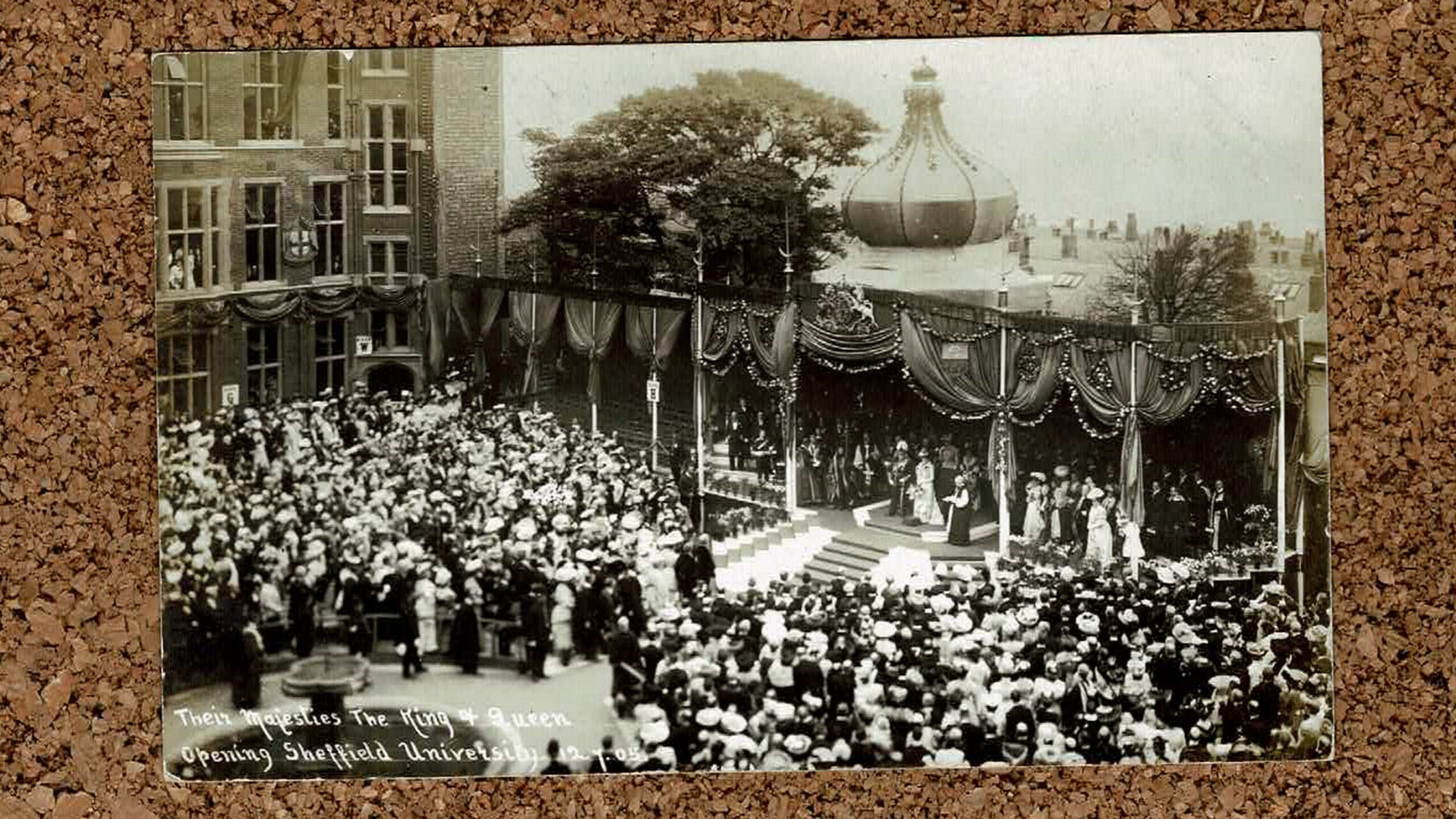To understand this royal scene, we need to understand how three nineteenth century institutions were created and combined.
First, let’s look at some reports from the Sheffield Independent, in 1828.
Saturday 16 February:
Institution for Promoting Medical Science – On Thursday, a meeting of Members of the Medical Profession was held at the Cutlers’ Hall, for the purpose of taking into consideration the propriety of establishing an Institution for the promotion of Medical Science. The attendance was as numerous as might be expected, the subject excited very considerable interest, and the plan proposed was highly approved. A subscription was entered into for the purpose of providing a suitable building, including a lecture room library and other necessary apartments, and a very handsome sum was put down by the gentlemen present.”
Saturday 19 April:
Sheffield Medical Institution: We have great satisfaction in announcing the magnificent contributions to the above institution, of One Hundred Guineas from His Grace the Duke of Norfolk, and Two Hundred Pounds from the Right Honourable Earl Fitzwilliam. We are persuaded, that if the objects for which this excellent institution has been established, were generally known, there would be found many other liberal, enlightened and wealthy individuals, desirous of supporting it; we would therefore take the liberty of suggesting the propriety of issuing a prospectus, in order to make the public better acquainted of its merits.”
Saturday, 18 October:
Last night, Dr Thompson delivered an Address introductory to the opening of the Medical School in Church Street He took an historical view of the state of medicine in Egypt, Greece, and Rome, and traced it the period of its improvement in this country. He described the qualifications of an accomplished Physician, and inculcated the necessity of profound attention and constant study to attain adequate science and skill. He announced what would be the aim of his colleagues and himself in the lectures which they intended to give; and paid a great, but deserved compliment to Mr Overend for his public spirit and liberality in commencing an institution which must be of incalculable advantage to students in medicine and surgery. There was one subject which introduced, which we mention give our hearty assent to it—the impropriety of Editors of Newspapers publishing those horrid accounts of resurrection-men, which can render no service to the public, and fill weak minds with cruel and unavailing fears. We have rejected many such instances from our columns, with view of checking the alarm, and silencing the reports which they would otherwise occasion. We cannot conclude without adding our tribute of applause to Dr Thompson, for the clear and able arrangement of his Lecture—for its elegant and nervous language’ and for the propriety of his judicious and manly delivery.”
And so was conceived and born the Sheffield Medical School, one of the forebears of the University of Sheffield. (8 months from the initial idea to opening isn’t bad, by the way – these things are hard to do!)
The Duke of Norfolk, one of the benefactors of the medical school, was a great Sheffield landowner (giving his name to the park near which I grew up, and the bog-standard comprehensive at which I got my O levels).
Such a development was not unusual – similar schools had been established in Birmingham and Leeds.
But higher education does not proceed by medicine alone, despite what some Deans of Medicine might say to you. And so we need to look forward to 1879 to the establishment of Firth College, which, as the Sheffield Daily Telegraph excitedly headlines, was on its way to becoming a university.
Sheffield Daily Telegraph, Saturday 24 May 1879:
THE FIRTH UNIVERSITY. ANOTHER ROYAL VISIT TO SHEFFIELD. It with great gratification we announce that his Royal Highness Prince Leopold has graciously consented to visit Sheffield in the middle of October next to perform the ceremony of opening Firth College, at present in course of completion. Lord Beaconsfield, we understand, has kindly interested himself in securing the honour of another Royal visit to Sheffield, and Mr. Firth feels deeply grateful to his Lordship on that account. During his stay in Sheffield the Prince and his suite will be the guest of Mr Firth at Oakbrook, where the Prince and Princess of Wales entertained in 1875 on the occasion of the opening of Firth Park. It was generally expected that Firth College would been opened August next, during the sittings of the British Association; but the people of Sheffield will be better pleased with the arrangement which secures the Royal recognition of another of the munificent benefits conferred by Mr Firth on his native town. It is very fitting that the ceremony should be performed Prince Leopold, who has always taken interest scientific: and literary pursuits similar to that evinced in his lifetime by his illustrious father”
Mr Firth was Mark Firth, a Sheffield steel magnate, and one of the city’s great benefactors. The college grew from the success of courses offered in the city as part of the Cambridge University Extension Movement, and it was to focus on both arts and sciences.
Prince Leopold was the eighth child of Queen Victoria and Prince Albert, and died in 1884.
Now two is not the three I promised at the start, but the second did spawn the third. The Sheffield Technical School was opened in 1884 as an offshoot of the university college. The Duke of Norfolk was again a benefactor, giving £3,000 towards its establishment. The Technical School focused on applied science and engineering, and although born from the university college, operated with a degree of autonomy.
And so by the late 1880s Sheffield had three institutions offering higher education. But none of them was a university. A first step to remedying this was a merger, in 1897, of the three institutions, to create the University College, Sheffield. The Court of Governors resolved to apply to join the Victoria University, but this was not forthcoming, and indeed the Victoria University began to fracture – Manchester, Liverpool and Leeds all seeking their own Charters. And so Sheffield did the same, eventually being granted a Royal Charter in May 1905.
The card records the formal opening by King Edward VII and Queen Alexandra on 12 July 1905. The splendid onion-domed marquee abuts Firth Court, the red-brick building at the heart of Sheffield’s red-brick university.
The card was posted in Sheffield to Mrs Osborne in Mansfield on 15 August 1905, from Nell.
It reads:
Dear Mrs Osborne, I am enjoying myself immense [sic] and it is beautiful weather. Last night I was speaking to Mr Osborne and he was surprised to see me. My cousin is keeping well and wishes to be remembered to you.













